A Wining Cost Estimate
That Helps You To Win More Roofing Construction Projects
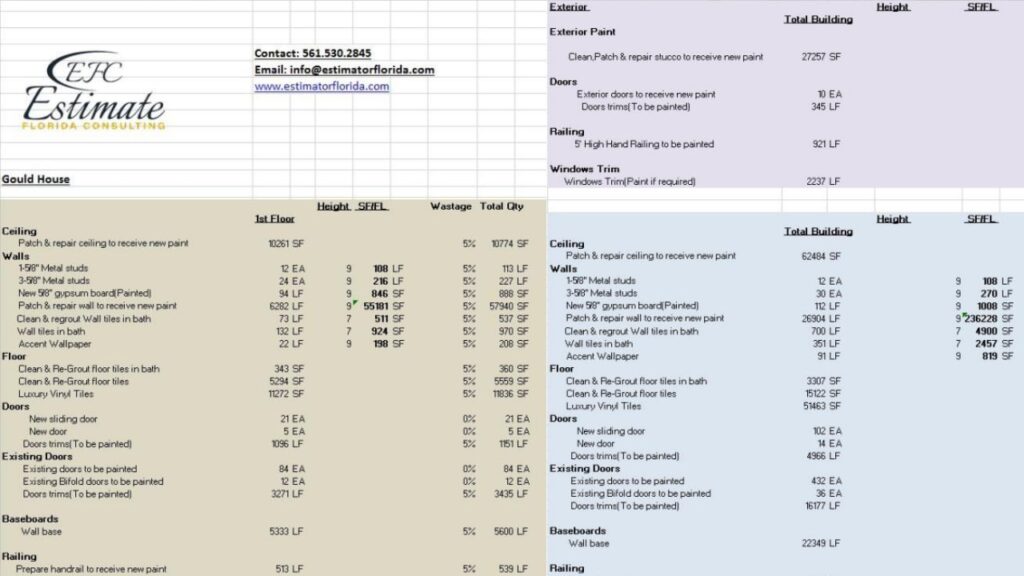
To make an informed choice about the best roofing option for your home, you need to consider these sub-sections. Climate considerations, material options, budget planning, style, and aesthetics play important roles in deciding the perfect roof for your home.
When selecting a roof for your property, climate is key. Research the area’s weather patterns before making a decision. Different regions have different degrees of precipitation, temperature changes, wind speeds, and other environmental elements that can affect your roof’s life.
High humidity can mean you need materials resistant to moisture damage, like mould and rot. Hailstorms? Get sturdy materials to avoid costly repairs. Hot regions need insulation and ventilation to control heat transfer.
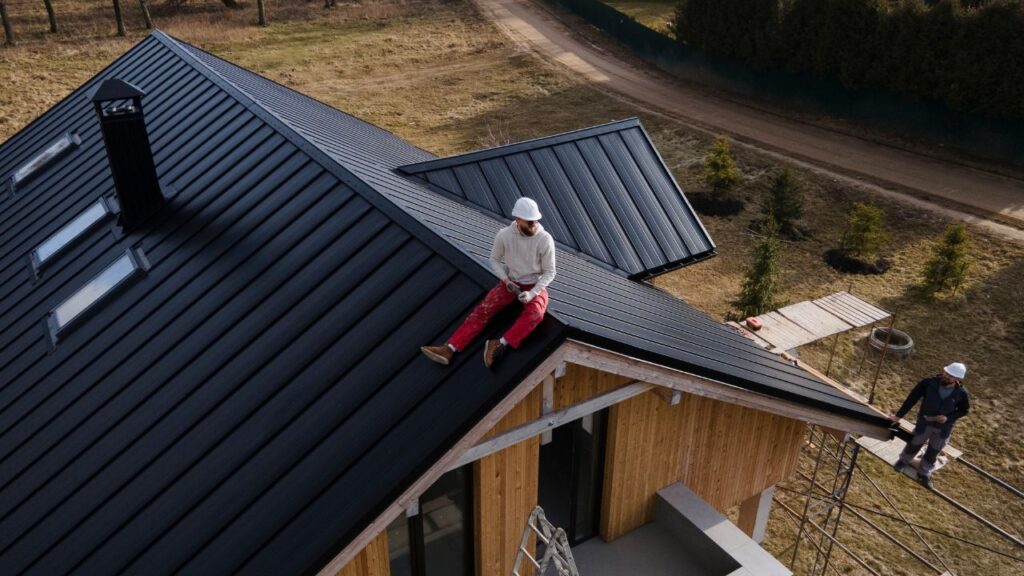
Do your research on the best roofing option for your climate. This will make sure you’re secure and comfortable, and protect your investment.
Climate is important when choosing a roof! Don’t ignore it – otherwise, you might end up regretting it. Like picking a spouse, your roof should be able to handle any storm.

Exploring Roofing Material Options
Homeowners have a wide array of roofing material options. From traditional asphalt shingles to more modern and eco-friendly options such as metal, clay, concrete, and slate, there’s something for everyone. Below is a table of popular roofing materials with their respective durability, cost, and energy efficiency.
Material | Durability | Cost | Energy Efficiency |
|---|---|---|---|
Asphalt Shingles | 15-30 years | Low-cost but requires frequent replacement. | Good reflection but low conductivity. |
Metal | 40-70 years, depending on type and coating. | Expensive but lasts a lifetime with minimal maintenance. | High solar reflectivity can reduce cooling costs in hot climates. |
Clay/Concrete Tiles | Over 50 years | Medium-high cost | Reduce energy consumption in winter and summer. |
Slate | Over 100 years with maintenance | High cost but durable | Excellent insulation reduces energy costs. |
Other factors to consider are installation complexity and the aesthetic appeal. A roof provides structural support for your entire building, so selecting the right roofing material is essential. Certain materials may be easy to install but require skilled laborers who cost more to hire.
A friend once got intricate copper roof tiles. Heavily raining that year revealed its limits in durability and the urgent need for maintenance repainting. So, choose wisely when buying a roof. It can have long-term effects on protecting your home and saving you resources.
Planning a budget for a new roof is like balancing a seesaw. Getting it wrong has serious consequences.
When buying a roof, financial factors are key. Consider your total budget, installation fees, and ongoing maintenance costs. Not paying attention to these could cause big problems down the line.
Planning your budget is essential. It might seem smart to go for the cheapest option, but if quality suffers, you could end up spending more in maintenance. Although paying more upfront can be daunting, it may be more cost-effective in the long run.
Think about other variables too, like roof replacement schedules. This will depend on weather patterns, local building regulations, and architectural design. All of these will require investments over time, with financial and operational implications.
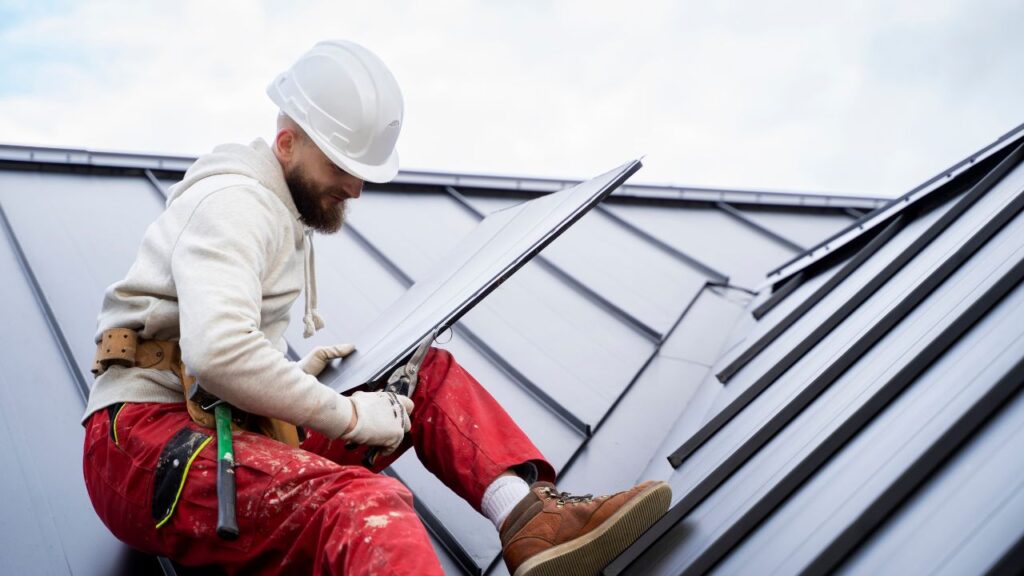
My friend went for the cheapest roof and ended up having to replace the whole thing after 7 years. Constant damages due to bad weather cost him more in maintenance than he saved initially. Plus, it damaged his home and resulted in major repair costs. Don’t make the same mistake – pick a roof that will make your neighbors jealous!
The look and feel of a building can be drastically changed by the design and appearance of its roof. Different styles, colors, and materials should be explored, to find the best fit for your property. Considerations for Style and Aesthetics include:
The roof pitch or angle is a key factor in aesthetics too. A steeper roof allows for unique design opportunities, while flatter ones may be more practical. As a pro-tip, invest in high-quality materials and complementary accessories for a roof that looks great and lasts long.
Picking a roofing material is like choosing a partner – you want it to be dependable and to stand the test of time and weather.
We help contractors find new customers with high-converting websites and locally targeted niche-specific lead-generation programs. You’ll never need to worry about running out of work again! We focus on quality over quantity with our leads for contractors.
To understand the different types of roofing materials and what they offer, turn to the section on Types of Roofing Materials with Asphalt Shingles, Metal Roofing, Tile Roofing, Slate Roofing, Wood Shakes, and Shingles. Each sub-section will cover the key features of each material, so you can make an informed decision about what type of roofing suits your needs.
Asphalt roofing shingles are a top pick for homes due to their strength and affordability. These shingles have a fiberglass or felt mat, which is coated with asphalt and mineral granules. This gives protection from the weather.
A table can show the many asphalt shingle varieties. It’ll have columns like type, cost per sq. foot, life, and colour options. For instance, 3-tab shingles, architectural shingles, and premium designer shingles are very popular. They cost different amounts per sq. foot. Premium is the most expensive, but also has a longer life of up to 50 years.
Asphalt shingles have some downsides. They can be damaged by extreme temps and bad weather. And, they’re not eco-friendly because they don’t last as long as metal or clay tiles.
Asphalt roofing is the most popular choice in America, according to the NRCA. It’s cheap and simple to install.
It’s worthwhile to consider the pros and cons of roofing materials before selecting one. Or, why not go for a metal fortress?
Metal roofing is a durable and long-lasting option. It’s made from high-quality materials such as steel, aluminum, copper, or zinc. It’s renowned for its strength and resilience against rough weather.
The cost and durability of metal roofs vary depending on the material used. Steel is the most affordable option. Copper and zinc are more expensive, but they can last longer and look more attractive.
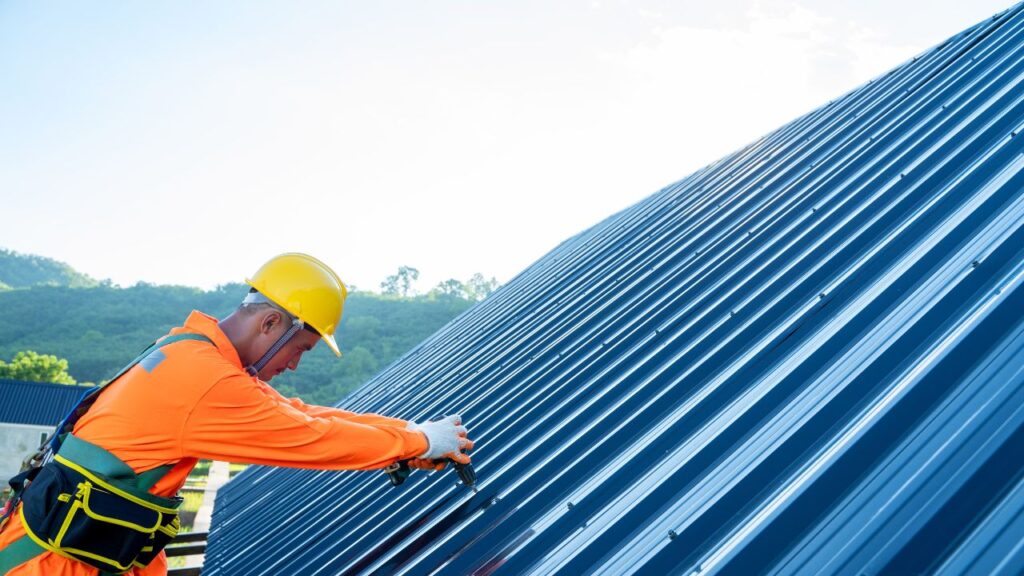
Pro Tip: Consult a professional roofing contractor for proper installation and maintenance. That way, you can get the most out of your metal roof. And if you want to feel like royalty, consider tile roofing!
Tile roofing is a popular roofing technique which gives beauty, strength and endurance. Clay or concrete tiles which interlock make a unique style. Check out the table below to see the various materials used for tile roofing and their features:
Material | Durability | Maintenance | Cooling Effectiveness |
Clay Tile Roofing | 50+ years with proper maintenance | Minimal maintenance needed | Excellent at regulating temperature in hot climates |
Concrete Tile Roofing | 30+ years with proper maintenance | Easily replaceable tiles for repair | Absorbs heat in cold regions while reflecting light in hot areas |
Tile roofing is not only visually attractive but also fire-resistant and wind-proof if installed properly. It can also raise your home’s value. One downside is the heavy weight of the tiles which require additional support during installation. The National Association of Home Builders states that houses with tile roofs last longer than houses with other types of roofs like shingles. So, if you want a roof that will last longer than your marriage, go for tile roofing!
Discover the transformative power of hiring professional contractors for your project. Unlock a wealth of expertise and experience to ensure success. Get started today and see the difference!
Slate roofing is thin and flat, made of highly durable stone. It has a classic look that is perfect for traditional buildings due to its natural appearance and weather-resistant properties. Its smooth surface creates an elegant look. Plus, with proper care and maintenance, it can last over 100 years.
Slate is expensive compared to other roofing materials. It’s heavy and brittle, so an expert must install it. Otherwise, it can break or fail early.
Slate comes in shades of gray, green, red, purple, black, and multicolored pieces. It also comes in different sizes and thicknesses, depending on its origin. The National Slate Association of USA states that most slate used in North America comes from Canada or Vermont.
For homeowners who want a durable and natural roof, slate roofing is a great choice. Not so much for those looking for cost-effectiveness. Wood shakes and shingles are a wild, rustic option, just like your uncle’s beard!
Wooden roofing materials have been around for centuries – their natural beauty and durability appreciated by many homeowners. Here are some of the characteristics:
Washington Irving made wooden rooftops famous in the 19th century. He wrote in ‘The Legend of Sleepy Hollow’ that they were “the most picturesque roofs in the world.“
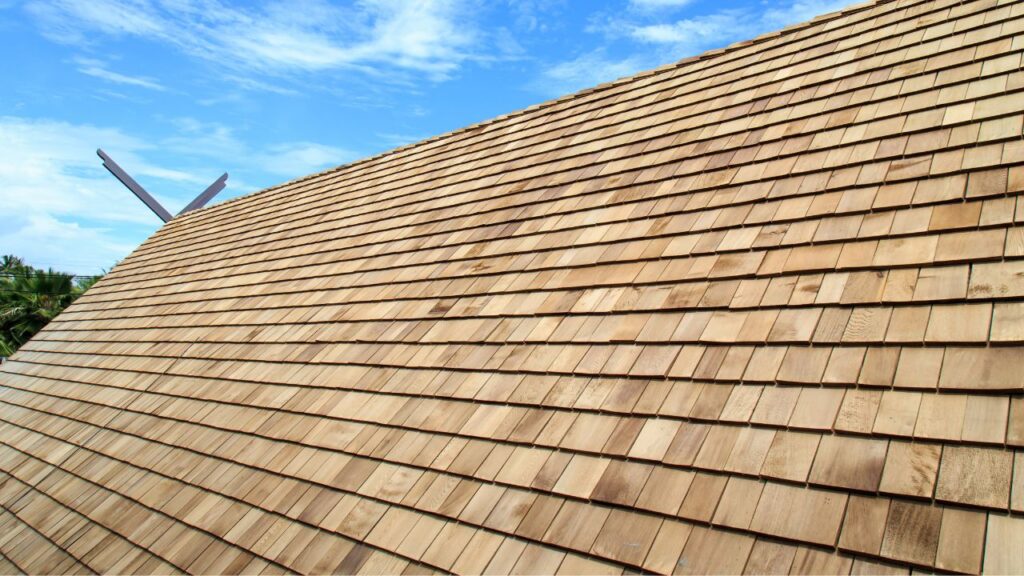
Maintenance of the roof is like a relationship – don’t ignore it and it won’t come back to haunt you!
To ensure the longevity and durability of your roof, it is crucial to prioritize its maintenance and repair. In order to make this process easier for you, this section on “Roofing Maintenance and Repair” with “Regular Maintenance Practices,” “Warning Signs for Repair,” and “Steps for Repairing a Roof” sub-sections will provide you with valuable insights and tips.
Regular Roof Maintenance Practices are a must for building roof longevity. Follow these five essential practices:
Remember, different materials may need different maintenance. Check manufacturer’s guidelines for instructions.
Neglecting Regular Roof Maintenance Practices can cost big in repairs or roof replacements. So, keep up with inspections and address issues quickly.

Roof Maintenance: A Lofty Challenge!
Pay attention to warning signs – they can help you prevent costly repairs and replacements. Here are some signs that your roof may need repair:
These are just a few indicators. Improper installation, ventilation problems, and age are other factors to consider. So, don’t wait until it’s too late to address roofing issues. Contact professional roofing experts right away for inspections and maintenance/repairs.
It’s essential to keep roofing in good condition, so external hazards don’t harm the property. To fix any roofing problems, take these steps:
Ventilation obstructions must also be removed for long-lasting roofing.
Don’t wait to fix roofing problems. Get routine inspections by a professional yearly, as recommended by The National Roofing Contractors Association. Pick the right contractor or you’ll have a leaky wallet too!
To choose the right roofing contractor with experience and reputation, licensing and insurance, written estimates and contracts, communication, and availability, you need to consider several crucial factors. By assessing these sub-sections, you can make an informed decision while choosing a roofing contractor. This section of “The Ultimate Roofing Buying Guide for Homeowners” will shed light on each sub-section to help you select the best-suited roofing contractor for your home.
When selecting a roofing contractor, it’s key to investigate their professional background and status in the industry. This gives you a better chance of a successful project outcome. Think about their experience, references, and previous work. Online reviews, BBB ratings, and Google My Business ratings can help you find out if they’re trustworthy.
Don’t forget to check for a license and liability plus worker’s compensation insurance coverage. These policies give you peace of mind. Also, get all contracts, permits, and receipts signed electronically.
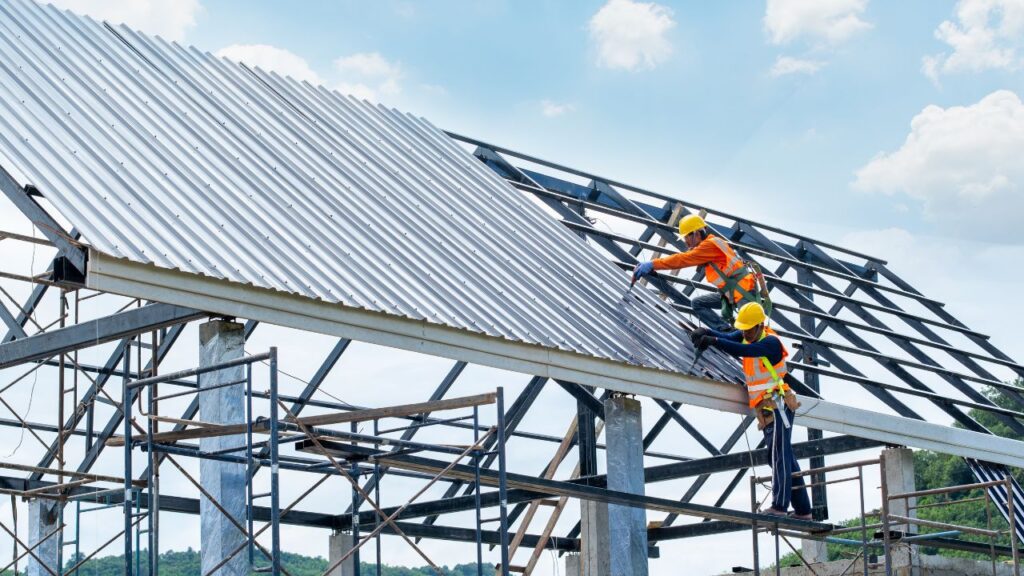
No insurance? That’s like tightrope walking without a safety net. One misstep away from disaster!
Before picking a roofing contractor, it’s essential to look at their credentials and insurance. This confirms you’re working with a skilled and respected company responsible for any damages or accidents during the job.
A legitimate license implies that the contractor has fulfilled all legal requirements and received proper training to complete the job right. General liability insurance safeguards you from any property harm or personal injury claims arising during the project.
It’s essential to make sure your roofing contractor has workers’ compensation insurance too. In case of injuries or accidents involving team members, this covers medical bills and lost income for employees.
Keep in mind that unlicensed contractors may be cheaper, but they can’t guarantee quality work or their services. Always verify your roofing contractor’s licensing and insurance status before signing up.
Don’t take risks when it comes to your home and family’s safety. Ensure peace of mind by picking a licensed and insured roofing contractor who can manage any unforeseen circumstances during the project. Who needs a prenup when you have a written contract?
Finding the right roofer? Get a clear, written proposal. It should include materials, costs, and timeline. Get a contract for terms of service, materials, permits, and workers’ comp. It protects both parties from confusion and guides the project’s progress.
Also consider certifications, credentials, and agreements in writing. These can help prevent disputes later. Take time to carefully think through potential contractors before signing. Protect your investment. Communication is essential – don’t get ghosted!
When selecting a pro roofer, it’s essential to consider their communication and availability. It’s key that they’re reachable and can answer all your queries, worries, and grievances. This guarantees a better working relationship and any issues can be swiftly addressed.
In case of emergencies or unforeseen situations, having a reliable contractor is a must. They should be available to examine the situation quickly and offer prompt solutions to reduce harm or trouble. Plus, the contractor should keep you informed throughout the task, providing regular updates and asking for your input when needed.
Before starting the project, it’s a good idea to decide which communication channel works best for both sides, such as phone calls or emails. Plus, it’s helpful to have expectations on response time so any issues can be tackled quickly.
To make sure the contractor values good communication, ask for references from past clients. Also, look at reviews on online platforms to see what customers have said about them.
In conclusion, picking a roofer with good communication and availability throughout the project can make sure the process goes well from start to finish. This forms a solid basis for a successful long term working relationship.
Maximize your roofing construction business’s potential with our competitive financing options

To ensure a successful roofing installation process with satisfactory results, the Ultimate Roofing Buying Guide for Homeowners recommends paying attention to specific sub-sections. These include pre-installation preparation, installation procedures, and quality checks after installation.
To have a successful roofing installment, proper pre-installation preparation needs to be accomplished. Necessary precautions must be taken and all materials and equipment should be ready.
Confirm the order details, get the site ready, arrange for material delivery and storage, make sure proper equipment is available, plan for weather beforehand, and check safety standards.
Examining the roof structure and talking about worries with contractors is important. This helps dodge problems during installment and guarantees that the goals of the project are met.
Tip: Staying in good communication with contractors throughout the procedure makes sure a precise and efficient roofing installation.
Installing a roof is like putting together a jigsaw puzzle, except the pieces are large, pointed, and over your head.
Installing a new roof requires one to consider several factors. Here are 3 steps to guarantee a successful installation:
Safety is key! When installing, use all protective equipment as recommended. These vital details can help reduce risk and ensure each layer is placed correctly.
Pro Tip: If in doubt, consult certified roofing professionals. Ensure your roof passes its test by preparing it for rain and in-laws!
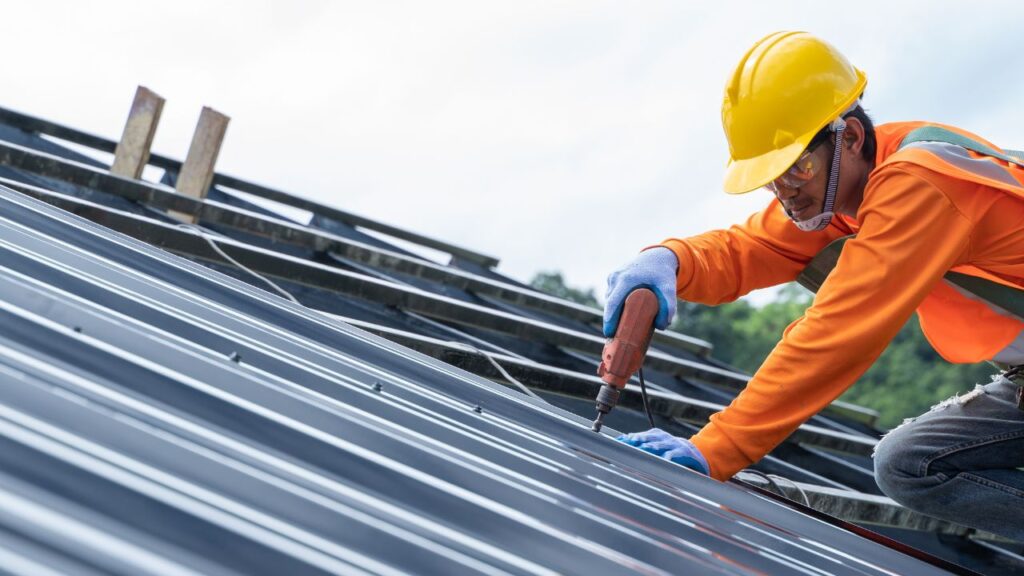
It’s vital to do quality checks after roofing installation. Look for any visible flaws or if safety protocols were followed. Make sure the manufacturer’s instructions were done right and meet industry standards. These checks guarantee durability and warranty validation. If you don’t do quality checks, you may have to pay for costly repairs later. Like any great relationship, your roof needs care and maintenance to last long. Don’t forget to do proper quality checks!
To enhance the longevity of your roof, with a focus on proper ventilation and insulation, professional cleaning, and addressing pest infestations. Each of these sub-sections plays a crucial role in maintaining the integrity and durability of your roof. Let’s take a closer look at how each of these solutions can help you extend the lifespan of your roof.
Thermal and Airflow Management – Essential for Roof Longevity
Sufficient ventilation and insulation are key to a long-lasting roof. Airflow and thermal control in the attic are vital tasks to maintain your roof’s performance.
No proper ventilation leads to heat build-up, damaging roofing materials. Plus, moisture in the attic leads to structural damage, mold and mildew growth, and poor air quality.
Homeowners should install vents to allow air exchange between the outdoor space and attic. Adequate insulation reduces energy consumption and temperature fluctuations, helping regulate indoor temperatures.
By taking care of these issues, property owners can greatly extend their roof’s lifespan. A study by the NAHB shows proper ventilation lowers energy costs and heat damage, potentially doubling the roof’s life expectancy.
Need help? Professional assistance is recommended. Your cleaning skills are not enough!

Maximizing Roof Lifespan? Professional Maintenance is the Answer!
Roof cleaning is a must-do for roof upkeep and can extend its life. Professional maintenance, like regular cleaning and inspection, can help avoid damage over time.
Here’s why it’s important:
The advantages? More energy efficiency due to better insulation and drainage.
Pro-tip: Schedule inspections and cleanings twice a year for the best results!
To battle vermin and other pests, one must take steps to keep them out. Here are some ways:
Method | Advantages |
Exclusion – sealing entryways | Prevents future pest infiltration and boosts safety. |
Cultural Control: Repelling with Scents | Natural aromas keep the property pest-free but don’t harm humans or ecosystems. |
Sustaining Proper Drainage and Cleaning up Cluttered Areas regularly. | Reduces moist and dirty areas which attract bugs, limiting future infestations. |
These exclusion and repellent methods can be done while still protecting the environment. Keeping proper drainage and cleaning cluttered areas can help keep pests away. Pro-tip: Inspections can catch infestations quickly to avoid huge damage. Roofing warranties, though, are like Tinder matches; they often vanish without a trace.
To ensure your investment in roofing doesn’t end up in disappointment, learn everything you can about roofing warranties and guarantees in “The Ultimate Roofing Buying Guide for Homeowners”. This section discusses different types of warranties, understanding the fine print, and maximizing long-term coverage, so you can choose the right warranty that fits your roofing needs with ease.
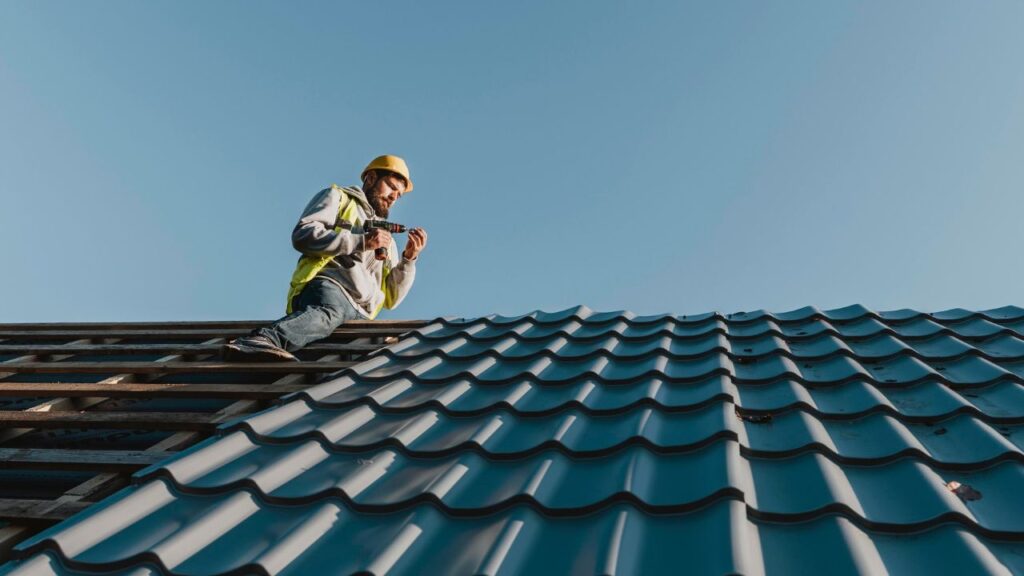
Different Types of Roofing Warranties!
Roofing warranties are guarantees provided by manufacturers and contractors. They protect against certain roofing issues or problems. They differ in terms of coverage and duration.
Warranty Type | Coverage | Duration |
Manufacturer’s warranty | Defects in roofing materials & workmanship | Up to 50 years |
Contractor’s warranty | Installation errors & workmanship | 1-2 years |
Maintenance agreement | Regular maintenance services like cleaning, inspection, leak repairs etc. | Yearly to monthly options |
Besides these standard warranties, there are other special ones. For example, wind warranties can protect from damage caused by strong winds. Most manufacturers provide them, but each covers different wind speeds and damage limitations.
Pro Tip: Always review the warranty before buying. Read the fine print carefully. It’s like searching for a needle in a haystack – except the needle is buried in jargon and legal lingo.
When it concerns roofing warranties and guarantees, it’s essential to comprehend the fine points. The small print is often where the most pertinent distinctions or ambiguity in insurance coverage can be found. This may include limitations on coverage, deductibles, time limits for filing claims and transferability of warranties.
It’s also vital to know who administers the guarantee. Sometimes, the contractor supports the warranty; other times, the manufacturer does. This distinction can affect how work is handled in potential disputes.
Different roofing materials come with different types of warranties. Asphalt shingles may have ten to thirty-year warranties while metal roofing systems may have fifty-year promises or longer.
Deciphering all this info takes time and effort. But it allows you to make an educated decision when selecting your next roofing contractor.
To stay safe, consider my friend’s experience with a bad roof replacement. They paid for it, but the contractor was not covered by any warranty. Thus, after only six months, their roof began leaking majorly and they lost more than half of what they had paid.
Want to make sure your roof is covered? Maximize your warranty – because without a functioning roof, life would be a downpour.

To get the most out of your roof warranty, it’s important to understand its terms. Read and comprehend the language in the document. Ask your contractor or manufacturer if anything is unclear.
Warranties from manufacturers cover defects in materials or workmanship. Warranties from contractors protect installation. Both types offer long-term coverage – as long as you follow recommended maintenance and care.
To maximize long-term coverage, register your warranty with the manufacturer and contractor. This proves you own the roof system.
One homeowner didn’t register their roof warranty after installation. They experienced leaks and couldn’t make a claim with the manufacturer. Registering the warranty promptly would have protected them.
Some popular roofing materials include asphalt shingles, metal roofs, clay or concrete tiles, and wood shingles or shakes.
It is not recommended to install a new roof yourself as it is a complex and dangerous task. Always hire a professional roofing contractor to ensure your safety and the quality of workmanship.
The cost of a new roof depends on many factors such as material, square footage, and the complexity of the roof design. On average, homeowners can expect to pay between $5,000 and $10,000 for a new roof.
The lifespan of a new roof depends on the material used. Asphalt shingles typically last 15-30 years, metal roofs can last upwards of 50 years, and clay or concrete tiles can last over 100 years with proper maintenance.
When hiring a roofing contractor, look for someone who is licensed and insured, has a good reputation in the community, and offers a written warranty for their work.
It is recommended to have your roof inspected by a professional every 2-3 years, or after any major weather events such as hail or high winds.
Here I am going to share some steps to get your roofing construction cost estimate report.
You can send us your plan on info@estimatorflorida.com
Before starting your project, we send you a quote for your service. That quote will have detailed information about your project. Here you will get information about the size, difficulty, complexity and bid date when determining pricing.
We do roofing construction cost estimating and prepare a detailed report for your project. At last, you finalize the report and finish the project.
561-530-2845
info@estimatorflorida.com
Address
5245 Wiles Rd Apt 3-102 St. Pete Beach, FL 33073 United States
561-530-2845
info@estimatorflorida.com
Address
5245 Wiles Rd Apt 3-102 St. Pete Beach, FL 33073 United States
All copyright © Reserved | Designed By V Marketing Media | Disclaimer
IMPORTANT: Make sure the email and cell phone number you enter are correct. We will email and text you a link to get started.
By clicking “I Agree” above you give Estimate Florida Consultin express written consent to deliver or cause to be delivered calls and messages to you by email, telephone, pre-recorded message, autodialer, and text. Message and data rates may apply. You are able to opt-out at any time. You can text STOP to cancel future text messages.